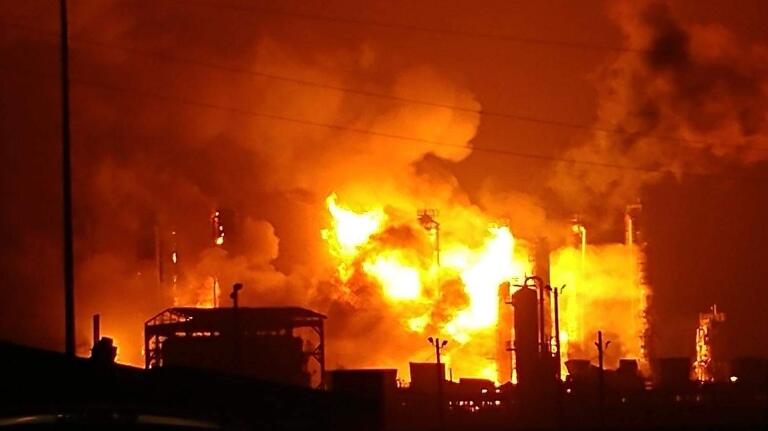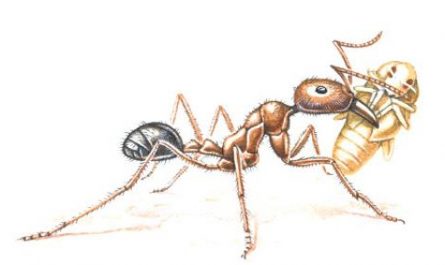The sugar we often eat can explode, not only that, it also blows up a huge sugar factory into ruins! Isn’t this story bloody enough to write a science fiction novel? But I want to tell you, this is a real thing, and it teaches us far more than the story itself.
Imperial Sugar Company, also known as Imperial Sugar, was once the most famous sugar company in the United States. It was founded in 1843 and has a large market share in the United States. In 1916, Imperial Sugar built a huge refined sugar factory in Port Wentworth, Georgia. The sugar factory occupies an area of 0.65 square kilometers and produces 9% of the annual sugar in the United States. It is called the “Imperial Sugar Factory.” However, at 7 o’clock in the evening on February 7, 2008, everything changed: a conveyor belt bearing in the sugar factory packaging workshop was overheated, and there was a lot of powdered sugar in the air around the conveyor. The powdered sugar exploded after being heated, and the explosive shock wave destroyed the packaging. At the same time, the workshop lifted the powdered sugar accumulated in the corners of the adjacent workshops into the air, resulting in a series of strong secondary dust explosions within 15 minutes.
The imperial sugar factory was blown to ruins
The explosion at the Imperial Sugar Factory not only killed 14 workers, but also suffered severe burns to more than 36 people. Some people even lost their entire body skin and were dying. Most of the sugar factory was in ruins and had to be demolished. Four years later, the Imperial Sugar Company was acquired by a Dutch company.
Can sugar explode? ! Many people will definitely shake their heads and say “this is a rumor” after hearing it. The white granulated sugar you often eat is certainly not easy to explode. Sugar is a carbohydrate and it can burn.
Sugar can burn
Our common sucrose contains many carbon, hydrogen and oxygen atoms. It will decompose into caramel at 186°C and can burn in oxygen to produce carbon dioxide and water. If we mix sucrose and potassium nitrate (oxidant) together, a kind of “rocket sugar” fuel can be made, and many amateur rockets are propelled by this sugar fuel.
There are many carbons in the sucrose molecule
We can burn sugar, but we rarely see it explode, because under normal circumstances the burning of sugar is not violent, far less than the degree of explosion. But if you grind the sugar into a fine powder and lift it into the air, or blow a birthday cake sprinkled with powdered sugar, you must be very careful at this time, it can easily hurt you.
Blowing powdered sugar triggers a deflagration
We usually call the chemical process in which objects react violently with oxygen and release high temperatures as combustion. When an object burns, the size of its contact area with oxygen determines the severity of the combustion. The larger the area you contact with oxygen, the more opportunities for molecules to undergo oxidation reactions per unit of time, and the more violent the combustion.
Let’s do a simple math problem: a cube rock candy with a side length of 1 cm, divide it into 8 cubes equally, what is the surface area?
Dividing an object will increase its surface area
A cube with a side length of 1 cm has 6 faces, and the surface area of the rock candy is 6 square centimeters. After being divided into 8 pieces, the surface area of each small rock candy is 1.5 square centimeters, and the total surface area of the 8 pieces becomes 12 square centimeters. We can see that when the rock sugar is divided, its surface area is twice as large as before. Continue to divide in this way until it is divided into about 40 microns of powdered sugar particles, and its total surface area will reach 6,144 square centimeters, which is 1024 times the original. The increase of the total surface area greatly accelerates the burning speed of sugar. If the concentration of powdered sugar in the air in the confined space reaches a certain value, violent combustion will evolve into deflagration.
Wood dust deflagration test
Not only does powdered sugar have a deflagration phenomenon, in fact many powder objects such as flour, starch, milk powder, cocoa powder, other grain powder, sawdust from wood processing plants, coal dust in coal mines, etc., when they reach a certain concentration in the air Deflagration may also occur at times. Some metal powders such as iron powder, aluminum powder, titanium powder and magnesium powder can explode very strongly.
Different from other dust deflagrations, the initial cause of the explosion of active metal powders such as aluminum and magnesium is often moisture. Very fine aluminum powder will produce hydrogen when it encounters water. Once it encounters a spark, the hydrogen will first react with oxygen and deflagrate, and then the aluminum powder will burn more violently, causing huge damage. Once there was an explosion in a factory because of the accumulation of aluminum powder generated by the polishing of the wheel hub in the equipment, causing a major accident in which hundreds of people were killed and injured. The lesson was profound.
explosion
There are very few chances of dust explosions in our daily lives. As long as you understand the hazards, don’t sprinkle flour or other powder when celebrating birthdays or holidays. Dust explosions occur more frequently in some factories and warehouses that produce dust. If management is lax, the production site is not well ventilated, and the machine is not cleaned for a long time, the dust will accumulate. Once the equipment malfunctions and generates high heat, static electricity or other reasons, it is very likely to happen. Explosion event.
There is a danger of explosion in a dusty workshop
The imperial sugar powder explosion accident is not an isolated incident. Similar tragedies occur frequently in many places. The explosion not only caused economic losses, but also caused a large number of casualties. This is enough to arouse our attention and vigilance.






